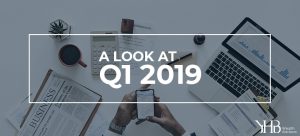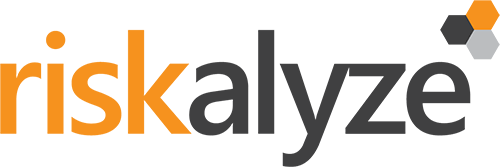

The New Year has brought with it a new wave of optimism, with equities rallying strongly across the world. Coming off the 4th quarter of 2018, when the S&P 500 saw its worst quarterly performance since 2011, the index rebounded in the 1st quarter of 2019 to recover 80% of the previous decline and turned in its best quarterly performance in ten years.
In many ways, the sharp weakness in the 4th quarter set the stage for the reflexive recovery in equity markets in the most recent quarter. As we discussed in our last quarterly commentary, the sell-off in equities in the final quarter of last year was caused predominantly by concerns about the potential for an escalation in the trade war between the US and China, fears that higher interest rates could hurt the growth of the US economy and corporate earnings, and broader worries about a slowdown in global economic growth.
During this quarter we’ve seen most of these concerns addressed to some degree, and the equity market has taken a more positive outlook to their eventual resolution. The Federal Reserve (Fed) reacted to the market weakness and weaker global growth by becoming more patient in their proposed path on rates and the reduction of their balance sheet. Whereas in the 4th quarter they announced an intention to raise rates at least three times in 2019, and escalate their balance sheet reduction significantly, early in this year they made a complete 180 degree shift. They have indicated rates are now currently at “neutral” and in fact, the next anticipated move is a rate cut. They have also sharply cut their balance sheet reduction plans, which leaves significant liquidity in the markets.
What can we expect?
Progress appears to have been made in the trade talks between the U.S. and China and many commentators now expect a new trade agreement to be signed before mid-year. Just the fact there appears to be progress has meant the delay in new tariff’s being enacted, which the market sees as a positive for future corporate earnings.
Global economic growth still looks weak in most developed economies and some are in outright contraction. Current estimates for future growth in the U.S. are also lower than previous expectations. However there is some belief the declines have bottomed and with growth in the U.S. remaining positive, the market now sees optimism for a recovery in growth estimates.
For the 1st quarter rally to continue into the year, the key questions, then are: will the Fed now be as dovish as the market expects, will the U.S. administration sign an acceptable trade agreement with China and not become more confrontational in its trade policy with other nations (i.e, Europe?), and has the decline in global growth bottomed? In addition, if the Fed does cut rates, as the market now expects, will it be because the worries about a slowdown in global growth that plagued markets late last year prove to have been warranted? At this point, we obviously don’t have answers to any of these questions, and their resolution could cause increased volatility.
Why Investing Long-Term Matters
We frequently talk about the importance of being a long-term investor. Not understanding the context of the bigger picture can lead to inappropriate, and at times costly, financial choices. The lack of a long-term perspective is also associated with emotional decision-making. This type of analysis helps us conceptually but is not always realistic—managing a portfolio requires activity. There are income requirements to be fulfilled, savings goals to be addressed, and tax deadlines to be met. Market volatility can have a positive or negative effect depending on when you take the picture. The long-term investor, however, understands that movements in price provide the opportunity for an investment portfolio to meet financial objectives.
The challenge for all investors (even those keeping a long term perspective in mind) during prolonged periods of market strength and low volatility, is not getting caught up in the hype normally surrounding such advances. It is important to remember that any increase or decline in a portfolio, or individual investment, is only reflected on paper until an action is taken. Staying true to a long term perspective, and understanding your individual tolerance for risk and volatility helps keep short term market advances and declines in perspective, and helps avoid emotional decision making when in the midst of either period.
If left unchecked, fear during market weakness will cause well-intended long-term investors to sell low and buy back at higher prices. But just as damaging to long term goals, being overcome with greed during market strength will cause other-wise conservative investors to chase over valued investments that could increase the volatility of their portfolio, and could likely see the sharpest declines in the next downturn. If you have done a financial plan with us or another advisor, it has most likely been carefully constructed with your long-term goals and risk tolerance levels in mind. Stay true to the plan. If you haven’t yet completed the planning process, I would encourage you to do so immediately.


Randy has more than 15 years of experience managing financial assets for individuals, retirement plans and businesses. Randy joined YHB | Wealth Advisors in January of 2018 and serves as the Director of Wealth Management. Prior to entering the professional wealth management field, he enjoyed building entrepreneurial business ventures from start-up to eventual sale and providing accounting services for public and private firms.


Riskalyze helps you understand your risk tolerance and align your investment strategy to provide you peace of mind. As a client of YHB Wealth you will have complimentary access to a Risk Number-centric view of your wealth.
